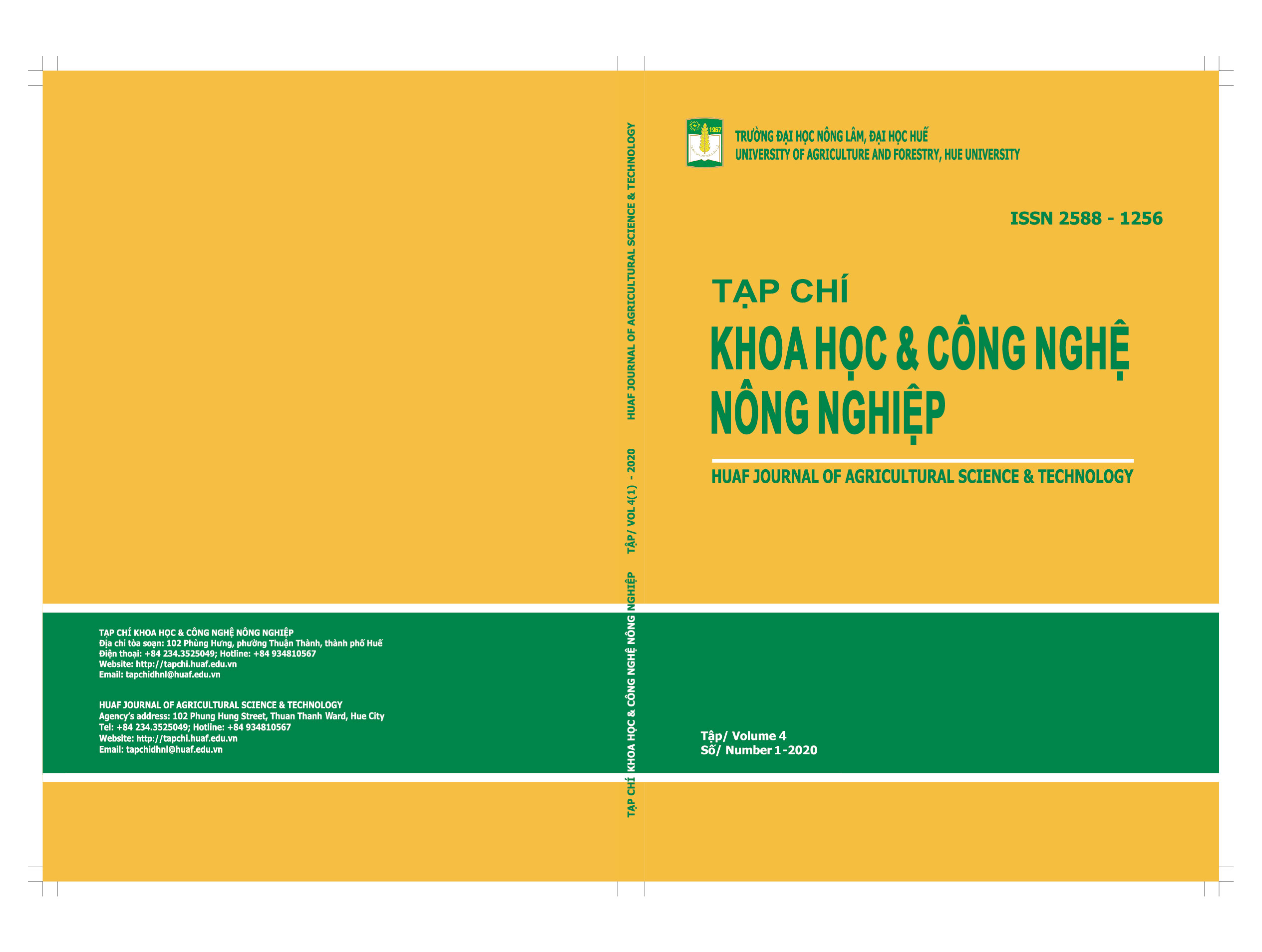##plugins.themes.huaf_theme.article.main##
Abstract
Nghiên cứu nhằm xác định giá trị dinh dưỡng của các bộ phận (lá, thân và rễ) của cây lá gai xanh được trồng tại tỉnh Quảng Ngãi. Hai giống cây lá gai xanh gồm giống gai xanh truyền thống và giống mới AP1 được thu hoạch lúc 50-54 ngày tái sinh sau lứa cắt thứ nhất. Cây sau khi thu hoạch được chia thành các bộ phận gồm lá, thân, rễ, và được sấy khô ở nhiệt độ 60oC, sau đó nghiền bột để tiến hành phân tích thành phần dinh dưỡng. Kết quả cho thấy, hàm lượng protein thô trong lá (21,8-22,9%) cao hơn trong thân (8,20-11,3%) và rễ (5,84-9,01); Trong khi, hàm lượng xơ thô trong thân (32,1-43,2%) cao hơn trong lá (14,4-16,3%) và rễ (12,6-23,7%). Tỷ lệ acid amin thiết yếu so tổng acid amin trong lá gai xanh dao động 44,85-47,85% và tỷ lệ từng acid amin so với lysine của lá đều không phù hợp với nhu cầu protein lý tưởng cho gà thịt và lợn sinh trưởng. Với kết quả này, có thể kết luận rằng các bộ phận của cây lá gai xanh có thể làm thức ăn cho gia súc nhai lại hơn gia súc dạ dày đơn.
Từ khoá: Acid amin, Cây lá gai xanh, Protein lý tưởng, Thành phần hoá học
ABSTRACT
The objective of this study is to evaluate the nutritional value of the parts (leaves, stems and roots) of ramie foliage (Boehmeria nivea L.) as a feed for animals in Quang Ngai province. Two varieties of ramie included traditional ramie and AP1 ramie were harvested at 40-50 days after the first cutting. The harvested ramie were divided into parts including leaves, stems and root, and these parts were dried at 60oC then to conduct nutrition analysis. Results showed that the dry matter, organic matter, crude protein, crude fat and crude fibre were 21.2-26.3, 78.8-82.4, 21.8-22.9, 4.4-6.05 and 14.4-16.3%, respectively. Similarly, these nutritional values in stems were 18.4-37.8, 90.3-95.8, 8.20-11.3, 5.20-8.90 and 32.1-43.2%, respectively. Whereas, the roots of ramie have dry matter, organic matter, crude protein, crude fat and crude fibre were 15.6-38.2, 88.0-97.1, 5.84-9.01, 3.60-4.00 and 12.6-23.7%, respectively. The percentage of essential amino acids in the leaves of ramie was 38.12-41.5%. In total essential amino acid, methionine content is the lowest, the ratio of lysine reaches 2.37-2.94 of total crude protein. Estimating the ideal protein of ramie reaches 340-420 g/kg protein. With these results, it could be concluded that the parts of ramie (Boehmeria nivea L.) can be fed for animals, especially the leaves. The leaves of ramie are the rich protein source that has much potential as a feed for animals.
Keywords: Ramie, Boehmeria nivea, Chemical composition, Amino acid

